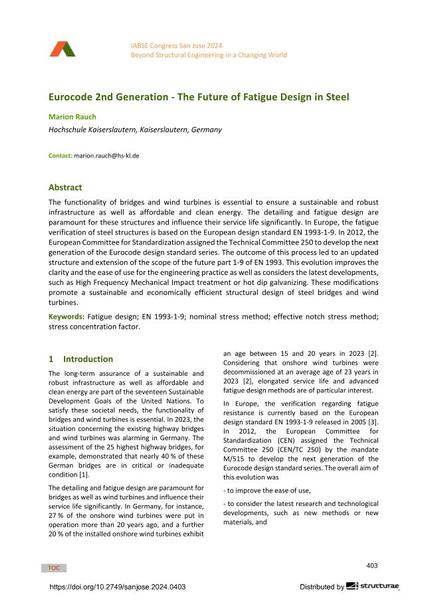Eurocode 2nd Generation - The Future of Fatigue Design in Steel

|
|
|||||||||||
Bibliographic Details
| Author(s): |
Marion Rauch
(Hochschule Kaiserslautern, Kaiserslautern, Germany)
|
||||
|---|---|---|---|---|---|
| Medium: | conference paper | ||||
| Language(s): | English | ||||
| Conference: | IABSE Congress: Beyond Structural Engineering in a Changing World, San José, Cost Rica, 25-27 Seotember 2024 | ||||
| Published in: | IABSE Congress San José 2024 | ||||
|
|||||
| Page(s): | 403-410 | ||||
| Total no. of pages: | 8 | ||||
| DOI: | 10.2749/sanjose.2024.0403 | ||||
| Abstract: |
The functionality of bridges and wind turbines is essential to ensure a sustainable and robust infrastructure as well as affordable and clean energy. The detailing and fatigue design are paramount for these structures and influence their service life significantly. In Europe, the fatigue verification of steel structures is based on the European design standard EN 1993-1-9. In 2012, the European Committee for Standardization assigned the Technical Committee 250 to develop the next generation of the Eurocode design standard series. The outcome of this process led to an updated structure and extension of the scope of the future part 1-9 of EN 1993. This evolution improves the clarity and the ease of use for the engineering practice as well as considers the latest developments, such as High Frequency Mechanical Impact treatment or hot dip galvanizing. These modifications promote a sustainable and economically efficient structural design of steel bridges and wind turbines. |
||||
| Keywords: |
fatigue design stress concentration factor EN 1993-1-9 nominal stress method effective notch stress method
|
||||
